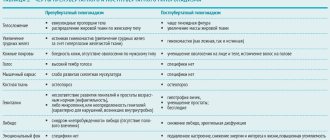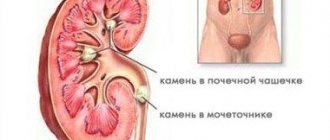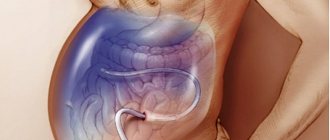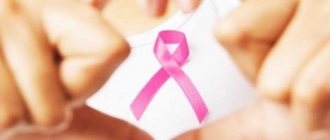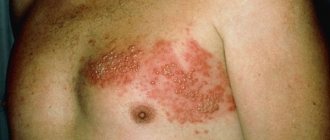Sodium bicarbonate
(lat. Natrii hydrocarbonas), other names:
sodium bicarbonate
,
tea garden
,
drinking
or
baking soda
,
sodium bicarbonate
- an inorganic compound, sodium acid salt of carbonic acid with the chemical formula NaHCO3.
In its usual form it is a finely crystalline white powder.
It is used in industry, the food industry, cooking, and medicine as a neutralizer of chemical burns of the skin and mucous membranes with concentrated acids and to reduce the acidity of gastric juice. Also used in buffer solutions.
The difference between sour salt and medium salt
Carbonic acid forms two groups of salts - carbonates (medium) and bicarbonates (acidic). The trivial name for carbonates - soda - appeared in ancient times. It is necessary to distinguish between medium and acid salts by names, formulas and properties. Na2CO3 - sodium carbonate, disodium carbonate, washing soda ash. Serves as a raw material for the production of glass, paper, soap, and is used as a detergent.
NaHCO3 - sodium bicarbonate. The composition suggests that the substance is a monosodium salt of carbonic acid. This compound is distinguished by the presence of two different positive ions - Na+ and H+. Externally, the crystalline white substances are similar, they are difficult to distinguish from each other.
The substance NaHCO3 is considered baking soda not because it is consumed internally to quench thirst. Although this substance can be used to prepare a fizzy drink. A solution of this bicarbonate is taken orally in case of increased acidity of gastric juice. In this case, excess H+ protons are neutralized, which irritate the walls of the stomach, causing pain and burning.
About the history of the discovery
The first mention of soda appears in the memoirs of Dioscorides Pedanius, a doctor from Rome, who described a method for obtaining powder by evaporating the substance from lake water.
The first “artificial” soda appeared only in the 18th century. To artificially obtain the substance in 1736, chemist Henri Duhamel de Monceau needed to use the crystallization method.
For the first time, soda powder was produced industrially in Russia. The industrial production was based on the discovery of chemist Eric Laxman, who established that soda is obtained by sintering charcoal and natural sodium sulfate. E. Laxman managed to test this method at a glass production plant in Taltsinsk. But the method is not widely used.
A more successful attempt took place in 1791, when the French chemist N. Lebman began to produce soda by fusing chalk, a mixture of sodium sulfate and charcoal. An enterprise was created that produced 120 kg. soda powder daily.
Lebman's technology was successfully used in Europe, and in 1864 the first plant of this type opened in Russia. It was a Barnaul enterprise created by industrialist M. Prague. Later, a large plant was opened in Russia, producing 20,000 tons of soda powder annually.
At the new enterprise, production was carried out using ammonia technology, which was proposed and patented back in 1838-1840. The ammonia method was more economical and made it possible to obtain higher quality soda, so by 1916-1920 all enterprises using Lebman technology were closed.
Physical properties of baking soda
Bicarbonate is white monoclinic crystals. This compound contains atoms of sodium (Na), hydrogen (H), carbon (C) and oxygen. The density of the substance is 2.16 g/cm3. Melting point - 50–60 °C. Sodium bicarbonate is a milky-white powder, a solid, fine-crystalline compound, soluble in water. Baking soda does not burn, and when heated above 70 ° C, it decomposes into sodium carbonate, carbon dioxide and water. In production conditions, granulated bicarbonate is more often used.
Release form
Powder for preparing a solution for infusion therapy. In bags of 50 g.
Powder for the preparation of a solution for topical use and oral administration. In bags of 10, 25 and 50 g.
Solution for infusion 4%. Available in 2 and 5 ml in disposable containers made of polymer materials; 100, 200 and 400 ml bottles; 100 and 250 ml in polymer containers.
Tablets 0.3 and 0.5 g.
Suppositories for rectal use 0.3, 0.5 and 0.7 g, 10 suppositories per package.
Safety of baking soda for humans
The compound is odorless and its taste is bitter and salty. However, it is not recommended to smell or taste the substance. Inhaling sodium bicarbonate may cause sneezing and coughing. One use is based on baking soda's ability to neutralize odors. The powder can be used to treat sports shoes to get rid of unpleasant odors.
Baking soda (sodium bicarbonate) is a harmless substance in contact with the skin, but in solid form it can cause irritation to the mucous membrane of the eyes and esophagus. In low concentrations, the solution is non-toxic and can be taken orally.
Where can I buy
In fact, finding baking soda, which is commonly used in baking pies or cleaning tiles, is not difficult at all. This product is affordable and you can buy it in any, even the smallest grocery store.
But a medical solution of sodium bicarbonate cannot be found in such places - this product is part of the assortment only at pharmacy counters. The substance is a colorless liquid produced in glass bottles with a volume of 20 ml. Containers with sodium bicarbonate are placed in packaging made of cardboard; the number of bottles contained in a pack is 10 pieces. This medicine can also be found in plastic bottles with a volume of 200, 250, 400 ml - the release form depends on the manufacturer. In addition, the substance is available not only in liquid form, but also in powder and tablet form. Sodium bicarbonate solution is very often used in hospitals during the postoperative stage, as well as for infectious diseases, kidney diseases and diabetes.
Sodium bicarbonate: compound formula
The gross formula CHNaO3 is rarely found in equations of chemical reactions. The fact is that it does not reflect the connection between the particles that form sodium bicarbonate. The formula commonly used to characterize the physical and chemical properties of a substance is NaHCO3. The relative arrangement of atoms is reflected by the ball-and-stick model of the molecule:
If you find out from the periodic table the atomic masses of sodium, oxygen, carbon and hydrogen. then you can calculate the molar mass of the substance sodium bicarbonate (formula NaHCO3): Ar(Na) - 23; Ar(O) - 16; Ar(C) - 12; Ar(H) - 1; M (CHNaO3) = 84 g/mol.
Exchange reaction with other salts
An aqueous solution of sodium bicarbonate enters into ion exchange reactions with other salts, provided that one of the newly formed substances is insoluble; or a gas is formed, which is removed from the reaction sphere. When interacting with calcium chloride, as shown in the diagram below, both a white precipitate of calcium carbonate and carbon dioxide are obtained. Sodium and chlorine ions remain in the solution. Molecular equation of the reaction:
Interaction of baking soda with acids
Sodium bicarbonate reacts with acids. The ion exchange reaction is accompanied by the formation of salt and weak carbonic acid. At the moment of receipt, it decomposes into water and carbon dioxide (evaporates).
The walls of the human stomach produce hydrochloric acid, which exists in the form of H+ and Cl– ions. If you take sodium bicarbonate orally, reactions occur in a solution of gastric juice with the participation of ions: NaHCO3 = Na+ + HCO3–; HCl = H+ + Cl–; H2O ↔ H+ + OH–; HCO3– + H+ = H2O + CO2↑. Doctors do not recommend constantly using sodium bicarbonate in case of increased stomach acidity. The instructions for the drugs list various side effects of daily and long-term use of baking soda:
- increased blood pressure;
- belching, nausea and vomiting;
- anxiety, poor sleep;
- decreased appetite;
- stomach ache.
Reviews
Baking soda is a time-tested remedy “for beauty, cleanliness and health.” These are the reviews about Sodium bicarbonate that can be found on the Internet. It is used for facial cleansing, teeth whitening and caries treatment, for weight loss and hair care, and also for pregnancy detection.
By the way, reviews of baking soda for weight loss are very optimistic, but only in cases where it was considered not as a panacea, but as an adjuvant. Some girls note that after a soda bath they immediately lost up to 2 kg of weight, but without physical activity and nutritional adjustments, the procedures would not have given a visible result.
Alternative medicine uses Sodium Bicarbonate to treat cancer. It is quite difficult to find reviews about soda treatment for oncology describing the results of treatment by the person himself. What is known is that patients of the doctor who promotes this method of treatment also die.
There are no statistics on people cured of cancer using soda. Self-medication when it comes to cancer is fraught with loss of time and the chance of cure.
Getting Baking Soda
In the laboratory, sodium bicarbonate can be obtained from soda ash. The same method was used previously in chemical production. The modern industrial method is based on the interaction of ammonia with carbon dioxide and the poor solubility of baking soda in cold water. Ammonia and carbon dioxide (carbon dioxide) are passed through the sodium chloride solution. Ammonium chloride and sodium bicarbonate solution are formed. When cooled, the solubility of baking soda decreases, then the substance is easily separated by filtration.
Analogs
Synonyms are the drugs Soda Buffer and Sodium bicarbonate . The 4th level ATC code is the same as Glucyl , Potassium chloride , Calcium , Xylate , Lactoxyl , Magnesium sulfate , Sodium chloride , Plerigo , Reamberin .
Where is sodium bicarbonate used? Use of baking soda in medicine
Many people know that sodium metal atoms vigorously interact with water, even its vapor in the air. The reaction begins actively and is accompanied by the release of a large amount of heat (combustion). Unlike atoms, sodium ions are stable particles that do not harm a living organism. On the contrary, they take an active part in regulating its functions.
How is a substance, sodium bicarbonate, which is non-toxic to humans and useful in many respects, used? The application is based on the physical and chemical properties of baking soda. The most important areas are household consumption, food industry, healthcare, traditional medicine, and beverages.
Among the main properties of sodium bicarbonate is the neutralization of increased acidity of gastric juice, short-term elimination of pain due to hyperacidity of gastric juice, gastric ulcer and duodenal ulcer. The antiseptic effect of baking soda solution is used in the treatment of sore throat, cough, intoxication, and seasickness. Wash the oral and nasal cavities and mucous membranes of the eyes with it.
Various dosage forms of sodium bicarbonate are widely used, such as powders, which are dissolved and used for infusion. Solutions are prescribed for patients to take orally, and burns are washed with acids. Sodium bicarbonate is also used to make tablets and rectal suppositories. The instructions for the drugs contain a detailed description of the pharmacological action and indications. The list of contraindications is very short - individual intolerance to the substance.
Price
The main advantage of sodium bicarbonate is its versatility, which is characterized by the possibility of using the powder in almost all areas of human life. An important advantage of the substance is also its cost, which paradoxically does not correspond to the wide range of qualities that baking soda has.
The price value of this product, first of all, depends on the region of the country, but if we take into account the average cost, it is approximately 25 rubles per 1 kg. But the price of medical soda is dictated by several criteria: city, manufacturer, release form, as well as the volume of the container containing the medicinal liquid (if it is a solution). The cost varies from 100 to 160 rubles.
Using baking soda at home
Sodium bicarbonate is an “ambulance” for heartburn and poisoning. Using baking soda at home, you can whiten your teeth, reduce inflammation during acne, and wipe the skin to remove excess oily secretions. Sodium bicarbonate softens water and helps clean dirt from various surfaces.
When hand washing wool knitwear, you can add baking soda to the water. This substance refreshes the color of fabric and removes the smell of sweat. Often, when ironing silk products, yellow marks from the iron appear. In this case, a paste of baking soda and water will help. The substances must be mixed as quickly as possible and applied to the stain. When the paste dries, it should be cleaned with a brush and the product should be rinsed in cold water.
In the reaction with acetic acid, sodium acetate is obtained and carbon dioxide is rapidly released, foaming the entire mass: NaHCO3 + CH3COOH = Na+ + CH3COO– + H2O + CO2↑. This process occurs whenever, in the manufacture of fizzy drinks and confectionery, baking soda is “quenched” with vinegar.
The taste of baked goods will be more delicate if you use lemon juice rather than store-bought synthetic vinegar. As a last resort, you can replace it with a mixture of 1/2 tsp. citric acid powder and 1 tbsp. l. water. Baking soda with acid is added to the dough as one of the last ingredients so that you can immediately put the baked goods in the oven. In addition to sodium bicarbonate, ammonium bicarbonate is sometimes used as a leavening agent.

